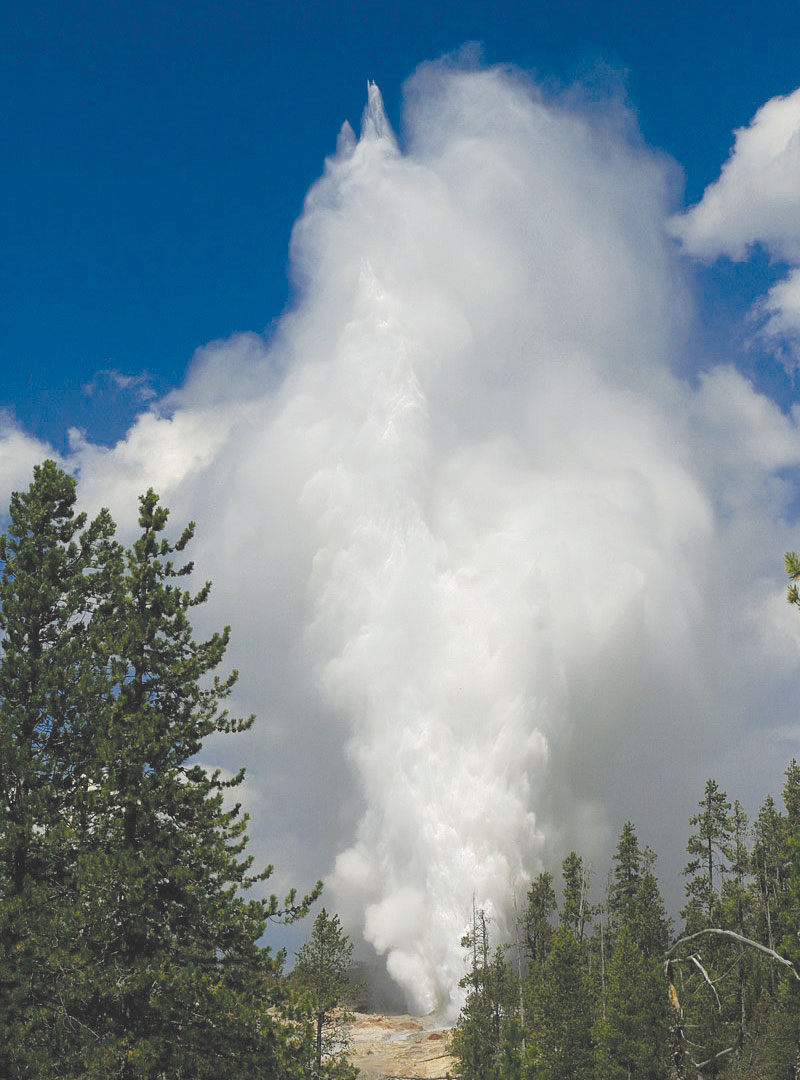
When Steamboat Geyser, the world’s tallest, started erupting again in 2018 in Yellowstone National Park after decades of relative silence, it raised a few tantalizing scientific questions. Why is it erupting again now? What can we learn about it before it goes quiet again? And why is it so tall? Recorded eruption heights reach up to 360 feet, high enough to splash the top of the Statue of Liberty.
U scientists have been studying the geology and seismology of Yellowstone for decades, and their findings provide a picture of the depth of the geyser as well as a redefinition of a long-assumed relationship between the geyser and a nearby spring.
“We don’t really know what controls a geyser from erupting regularly, like Old Faithful, versus irregularly, like Steamboat,” says Fan-Chi Lin, an associate professor of geology and geophysics.
Unlike its famous cousin Old Faithful, Steamboat Geyser seemingly follows no patterns. It’s only had three periods of sustained activity in recorded history— one in the 1960s, one in the 1980s, and one that began in 2018 and continues today. But the current phase of geyser activity has already seen more eruptions than either of the previous phases.
Just as doctors can use multiple X-rays to create a CT scan of the interior of a human body, seismologists can use multiple football-sized seismometers recording several events to build a sort of image of the subsurface.
The results show that the underground channels and fissures that comprise Steamboat Geyser extend down at least 450 feet. That’s much deeper than the plumbing of Old Faithful, which is around 260 feet. The study also found there was no direct connection between Steamboat Geyser and a nearby spring that drains when Steamboat erupts.
Will scientists eventually be able to predict when the geyser will erupt? Maybe, says Lin. “We now have a baseline of what eruptive activity looks like for Steamboat,” he points out. “When it becomes less active in the future, we can redeploy our seismic sensors and get a baseline of what non-active periods look like.”



Comments
Comments are moderated, so there may be a slight delay. Those that are off-topic or deemed inappropriate may not be posted. Your email address will not be published. Required fields are marked with an asterisk (*).